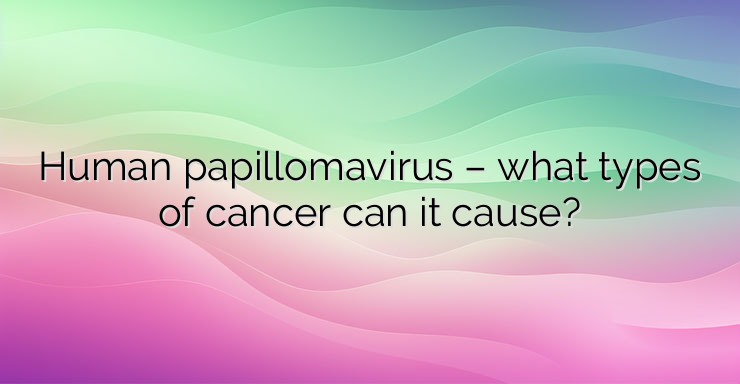What is human papillomavirus? Human papillomavirus (HPV) is a DNA virus that infects cells of the skin or mucosa. Human papillomavirus causes a viral infection that often causes papillomas (benign growths) on the skin or mucous membranes. There are more than 100 varieties of human papillomavirus. Some types of infections with this virus cause warts, and others can cause various forms of cancer. These infections are often transmitted sexually or through direct contact. Vaccines can help protect against the strains of human papillomavirus that most commonly cause genital warts or cervical cancer. Most human papillomavirus infections do not lead to cancer, but some types of HPV can cause cervical cancer. Other types of cancer, which include cancer of the anus, penis, vagina, vulva, and back of the throat (oropharyngeal carcinoma), are also associated with HPV infection. The two most common types of HPV, which cause approximately 70% of all cervical cancers, are HPV 16 and 18. Two other types (HPV 6 and 11) cause genital warts (condylomas), which are a common benign condition of the external genitalia, which causes significant morbidity. Human papillomavirus is highly transmissible, with peak incidence soon after the onset of sexual activity, and most people acquire the infection at some point in their lives. What are the symptoms of human papillomavirus infection? In most cases, the immune system defeats the HPV infection before it forms warts. However, when warts do occur, they differ in appearance depending on the type of virus: Genital warts Genital warts are flat lesions, small bumps, and can form singly or in groups, often resembling the shape of a cauliflower. In women, genital warts mostly appear on the vulva, but they can also appear near the anus, on the cervix, or in the vagina. In men, genital warts appear on the penis and scrotum or around the anus. Genital warts rarely cause discomfort or pain, although they may itch or cause some tenderness. Common warts Common warts look like rough, raised bumps and usually appear on the hands and fingers. In most cases, common warts do not cause complaints, but they can also be painful or prone to injury or bleeding. Plantar warts Plantar warts are hard, granular growths that usually appear on the soles of the feet. These warts can cause discomfort. Flat Warts Flat warts are flat-topped lesions that are slightly raised. They can appear anywhere on the body, but in children they usually appear on the face, in men they are more often formed in the chin area,and in women they most often affect the legs. What is the relationship between human papillomavirus and cervical cancer? Almost all cervical cancers are caused by human papillomavirus infections. Cervical cancer can take 20 years or more to develop after HPV infection. Human papillomavirus infection and early-stage cervical cancer usually cause no noticeable symptoms. Vaccination against human papillomavirus is the best protection against cervical cancer. As early cervical cancer causes no symptoms, it is vital that women have regular screening tests to catch any precancerous changes in the cervix that could lead to malignancy. Current guidelines recommend that women have a Pap test every three years. Bibliography: National Health Service (NHS). Human papillomavirus (HPV) Centers for Disease Control and Prevention (CDC). STD Facts – Human papillomavirus World Health Organization (WHO). Human Papillomavirus


Leave a Reply